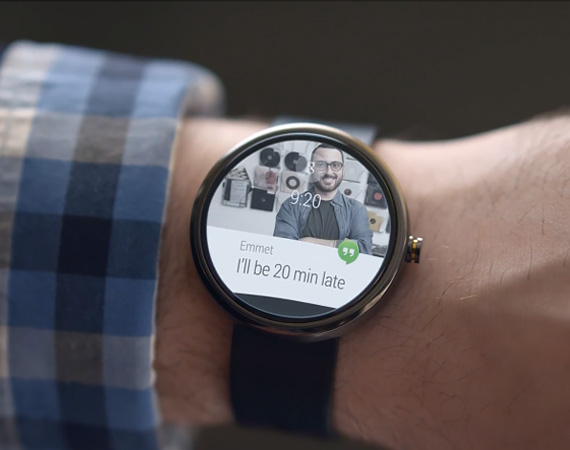
Android Wear Is Conceptually Flawed
For quite some time now, I’ve been working on a piece that would detail the possible outcomes for the smart watch industry. One point that I was having trouble putting into words finally came to me while doing some research on another topic for a piece on Medium. While perusing AndroidAuthority, I stumbled onto this quote from Huawei’s Vice President of Product Management, Yang Yong:
Android Wear is not as open as Android. For the watch it cannot be a standard. … What we are doing is trying to make from the hardware view, in the design view, in the software view, in the surface view, we are trying to differentiate our watch to appeal to the consumers who will use it.
This thought had been lurking in my head for some time. While it is yet to be seen wether Apple Watch will be an iPhone-like product with strong competitors or an iPod-like product with a virtual monopoly, Android Wear is — on a purely conceptually level — flawed and unlikely to succeed in the fast approaching smart watch industry.
When announcing Android Wear in early 2014, Google made a clear effort to state that Wear would not be customizable by OEMs, a departure from the philosophy behind their smartphone operating system. On Android, manufacturers got used to having full control over the Android experience, catching up with the iPhone by making software optimizations and internal upgrades to software design. But with Wear, OEMs are now being forced to design products in order to sell them from an external hardware standpoint alone, as they have have no control over the software and little over the specs. These companies need to focus on practicality every aspect, in addition to design, in order to compete with Apple.
Every new category the tech industry has produced in the past few decades has revolved around one core debate: open vs. closed. And in the wearable race, closed wins on the offset. Open is not feasible in wearable, and while Google seems to understand this by making Wear one unified input/output experience, they are actually doing the opposite: They are shopping the OS the other manufacturers, which makes it open, but they’re locking it down and handcuffing those manufacturers from improving or personalizing the experience, which makes it closed. This leaves Wear in a gray area, and customers seem to realize this. And they’re turned off by it.
Imagine a world were every watch has the same features and controls, from Rolex to Swatch, the only differentiating factors being the bands and the chassis. This is Android Wear. Hundreds of manufacturers, all running the exact same faces with the same technologies inside. At that point, what’s the point of having those hundreds of manufacturers? Brand dilution is the only possible outcome, and all for share of a much smaller potential market than any of them are used to.
This wont work, and Huawei knows it. I think other Android OEMs know it too, as Sony, Samsung, LG, and others have all made noticeable smartwatch efforts outside of Android Wear. Companies like Samsung made a fortune in the smartphone industry by simply adding random features to a slew of differently-sized handsets on an accelerated, eclectic release schedule. With Wear, they no longer have that option. They don’t have the ability to add features to the software or to add sensors to the hardware. What if, as smartphone manufacturers, Samsung and HTC had no control over Android from the beginning, and all they were allowed to do was make hardware with zero variation over specs and OS? Would Android have ever picked up? Google seems to recognize that controlling the narrative is more profitable than the alternative. Apple’s proved it. But how can Google reconcile these conflicting ideals with Android Wear? How can Google, and OEMs in particular, grow their marketshare without making massive changes to Wear itself?
Maybe smartwatches are like TV for Google. Maybe they just won’t be able to get it right. They were willing to do anything to join the club with smartphones, allowing manufacturers to do whatever they wanted, but now that they’ve grown bigger than most of their OEMs, they want to be in control of the smartwatch, even as other companies build the products with their own branding and reputations on the line.
But as we learned time and time again, Google in incapable of making hardware itself at a human price, and the OEMs may not want to play ball this time.